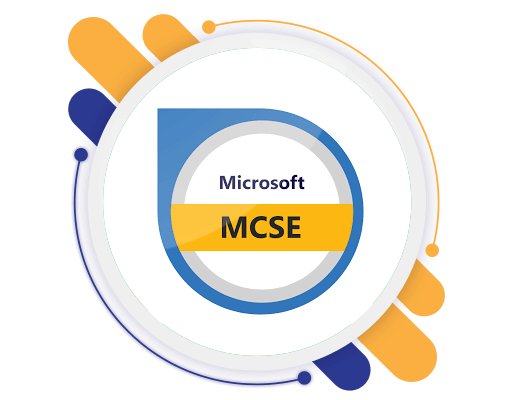"SMEClabs" is a registered trademark of SMEC Automation Pvt. Ltd. © 2024 SMEClabs All rights reserved

78%
Alumni Career Transitions
5200+
Hiring Partners
60%
Avg Salary Hike
22
Years of R & D in Syllabus
** Syllabus Updated on April 2023 -2024
MCSE Certification is offered by various modes in SMEClabs. We SMEClabs offer online and offline training modes under MCSE Online Certification Training. Online MCSE training lets you study as per your convenient time and from the place of your choice. You can also opt for customized training for your employees if you are already working professionally. This kind of training permits the tailoring of the curriculum as per the needs of the organization. One to one training is helpful to students who want to clear their doubts or have any queries. You can also send a mail across for any doubt.
MCSE Certification online Training by SMEClabs will help you clear MCSE certification. Our trainers will help you pick the right certification for you among all the available certifications under MCSE. As MCSE certified professional you can earn between $44,429 to $110,757 per year. MCSE online Training Course from SMEClabs will help you land your best job profile in one of the MNCs.
MCSE Online Training by SMEClabs is a job oriented training course. During MCSE online Certification Training, you will work on industry-related projects and hands-on exercises. MCSE online Training Course will make you an expert in concepts such as server environment, IP addressing, DHCP, DNS server, the configuration of protocols, routing, etc. You can also opt for a free demo session before signing up for the training. Our trainers will provide you certification guidance in MCSE Online Training Course.
MCSE Online Training Course provides complete guidance and working module of MCSE. The syllabus has been designed to help you cover every single important aspect of MCSE. Following are some of the topics taught during MCSE Online Certification Training:
Upon completion of the courses, the candidates will be able to:
MCSE Course Networking Cisco Training and Certification 2023 Online Offline classes Virtual Lab Facility Updated syllabus Computer Hardware
** The above is the lite syllabus and doesn’t cover the full syllabus. To get full syllabus Book a Free Demo Now

International & National Level Certification.
Subscription for remote lab connectivity. 24x7
Set and maintain flexible deadlines.
Certifications & Accreditations






Mode of Training
60 Days +
Learning Content + Practicals
SMEClabs
INDIA
2nd Floor Kaloor Bus stand Complex Cochin.
Ph: +91 9958873874
[email protected]
"SMEClabs" is a registered trademark of SMEC Automation Pvt. Ltd. © 2024 SMEClabs All rights reserved